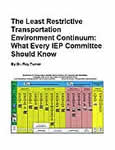All Articles
Accident Investigation & Reconstruction
Insurance Coverage Analysis
Accounting
Life Expectancy - Life Care Planning
Alcohol, Tobacco & Other Drugs
Marine - Maritime
Arms - Guns - Weapons
Market Research
Automotive - Vehicular
Marketing
Bacteria - Fungus - Mold Investigation
Mediation
Banking
Medical - Medicine
Boating
Medical Records Review
Branding - Brand Management
Metallurgy
Child Welfare
OSHA
Computer Forensics
Pharmaceuticals
Computers
Physician Assistants
Corrosion
Police Practices & Procedures
Dental - Dentistry
Pools and Spas (Recreational)
Design
Professional Malpractice
DNA (Deoxyribonucleic Acid)
Professional Skills
Domestic Violence
Psychiatry
Employment
Public Speaking
Energy - Utilities
Recreation & Sports
Environment
Search Engine Optimization (SEO)
Finance
Supply Chain Management
Forensic Psychiatry
Telecommunication
Forensics
Toxicogenomics
Forgery & Fraud
Warnings & Labels
Gems & Jewelry
Workplace Violence
More...

APPRAISAL-VALUATION-PAGE ARTICLES MAIN PAGE
. Contact Us if you are interested in having your work published on our website and linked to your Profile(s).
All Articles
Accident Prevention & Safety
Family Issues
Accounting
Foreign Affairs - Geopolitics
Aquatics Safety
Forensics
Archaeology - Archeology
Hazardous Materials
Arms - Guns - Weapons
Human Factors
Artificial Intelligence (AI) / Machine Learning (ML)
Hydrology
Attorney Fees
Injury
Audio Forensics
Insurance Coverage Analysis
Banking
Land Mapping - Surveying - Zoning
Blockchain Information
Manufacturing
Child Welfare
Marine - Maritime
Communication
OSHA
Cosmetology: Hair / Makeup
Pain Management
Crisis Management
Pharmaceuticals
Digital / Crypto Currency
Police Practices & Procedures
DNA (Deoxyribonucleic Acid)
Politics
Documentation Examination & Analysis
Premises Liability
Dram Shop Liability
Professional Skills
Education & Schools
Psychiatry
Elder Abuse
Public Speaking
Electrical - Electrocution
Recreation & Sports
Elevators - Escalator - Automatic Doors
Spirituality
Employment
Toxicology
Ethics / Ethical Duties
Transportation
Expert Witnessing
Yoga
More...
Featured Articles
There are no active articles here at this time. Please use the search bar, try another category, or contact us if you would like to contribute an article.
This Article is unavailable. Contact Us
Search articles by title, description, author etc.
Sort Featured Articles
Featured resources
Process Improvement for...
by Willie L. Carter
Least Restrictive Transportation...
by Ray Turner, EdD
Analyzing Leadership Styles of...
by Jeffrey Fox, PhD
Follow us










